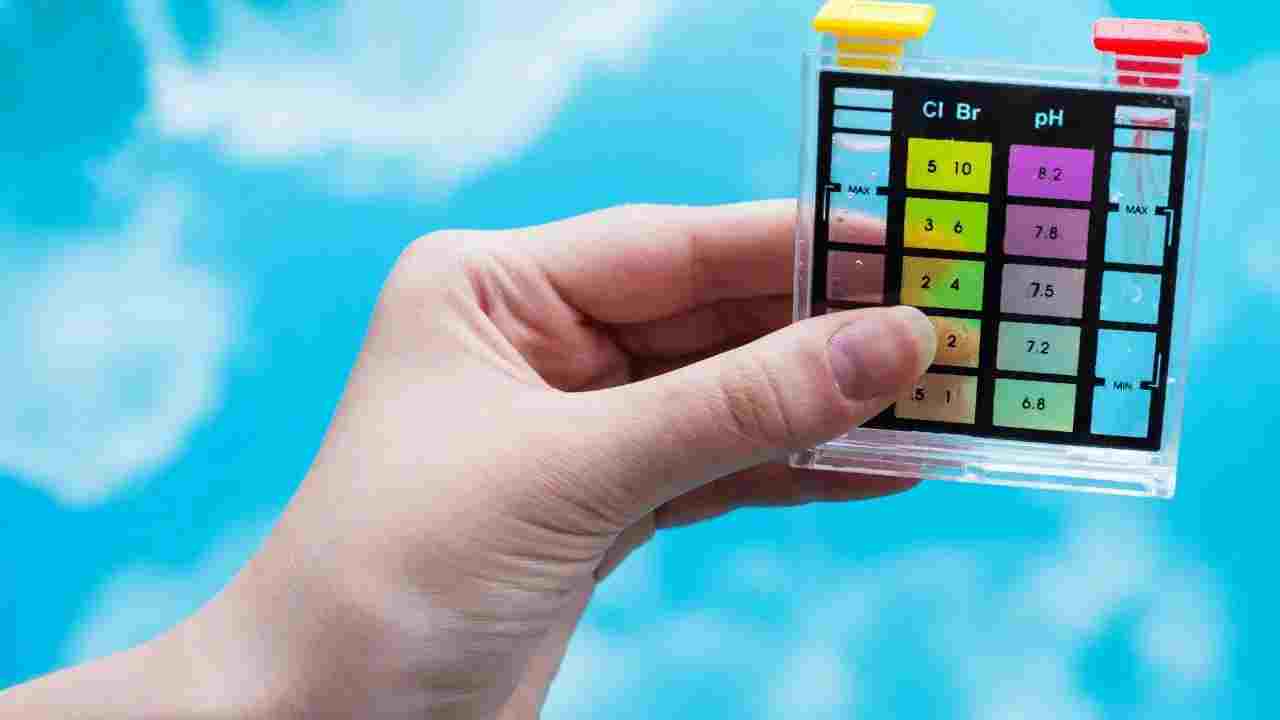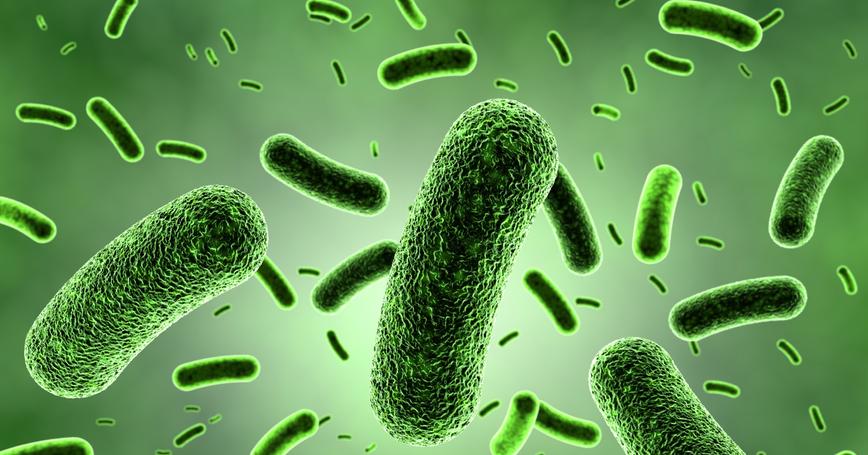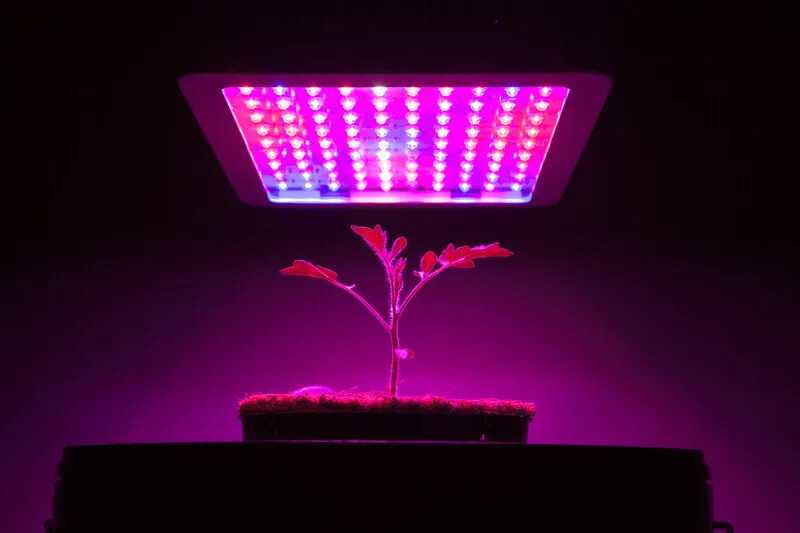
Welcome to the ultimate guide for mastering hydroponic lighting techniques, where we will delve into the world of indoor gardening and explore how to achieve optimal plant health through the power of artificial light. As more and more people embrace the idea of growing their own produce in limited spaces, hydroponics has emerged as a game-changer. With this innovative method, plants can thrive without soil, relying instead on a nutrient-rich water solution. However, the key to success lies in understanding the crucial role that lighting plays in this process. In this comprehensive guide, we will demystify the complexities of hydroponic lighting, from the different types of grow lights available to the best light spectrum for each stage of plant growth. Whether you’re a beginner or an experienced hydroponic gardener looking to take your skills to the next level, this guide will equip you with the knowledge and techniques needed to cultivate healthy and vibrant plants year-round. Let’s dive in and illuminate your hydroponic journey!
Importance of Proper Lighting in Hydroponics
Hydroponic lighting is not just a matter of convenience for indoor gardeners. It is an essential element that directly affects the overall health and productivity of your plants. Proper lighting ensures that plants receive the necessary energy for photosynthesis, which is vital for their growth and development. Without adequate light, plants may become weak, leggy, and unable to produce an abundant harvest.

One of the primary advantages of hydroponic gardening is the ability to control the light environment, allowing for optimal growth conditions. By understanding the importance of proper lighting in hydroponics, you can create an environment that mimics natural sunlight and provides your plants with the energy they need to thrive.
To achieve optimal results, it is crucial to choose the right type of lighting, understand the light spectrum, and properly manage light intensity and duration. In the following sections, we will explore each of these factors in detail, providing you with the knowledge to master hydroponic lighting techniques like a pro.
Let’s delve deeper into the importance of proper lighting and how it affects hydroponic plants:
1. Photosynthesis and Plant Growth: Light is a primary source of energy for photosynthesis, the process through which plants convert light energy into chemical energy, producing sugars that fuel their growth and development. Adequate and appropriate lighting is essential for supporting robust photosynthesis, leading to healthy, vigorous plants.
2. Light Spectrum: Different light wavelengths have specific effects on plant growth and development. The light spectrum comprises various colors ranging from blue (400-500 nm) to red (600-700 nm) wavelengths. Blue light is crucial for promoting vegetative growth, while red light plays a significant role in flowering and fruiting stages. Providing the right balance of light spectrum ensures well-rounded plant development.
3. Light Intensity: Light intensity refers to the brightness or amount of light reaching the plants’ leaves. Sufficient light intensity is necessary to drive photosynthesis effectively. Insufficient light can lead to weak, elongated growth (etiolation) and reduced yields. On the other hand, excessive light intensity can cause heat stress and damage to plants.
4. Light Duration and Photoperiod: The photoperiod, or the number of hours of light exposure per day, plays a crucial role in regulating various plant processes, including flowering. Some plants require specific photoperiods to flower or set fruit. Controlling the light duration in hydroponics allows gardeners to manipulate plant growth and flowering patterns.
5. Supplementing Natural Light: In indoor hydroponic systems, artificial lighting is used to supplement natural sunlight, especially in locations with limited sunlight or during the winter months. Supplemental lighting ensures a consistent light environment, allowing year-round cultivation and faster plant growth.
6. Light Efficiency and Energy Costs: Using energy-efficient lighting solutions, such as LED grow lights, can help minimize energy costs while still providing the required light intensity and spectrum for optimal plant growth. LED grow lights produce less heat, reducing the need for additional cooling measures.
7. Light Distribution: Proper light distribution within the hydroponic system is crucial to ensure all plants receive an equal amount of light. Properly positioning and spacing the grow lights can prevent shading and ensure even growth across the entire crop.
By understanding and optimizing hydroponic lighting factors such as light spectrum, intensity, duration, and distribution, you can create an ideal light environment for your plants’ specific needs. This proactive approach to lighting management contributes to healthier, more productive plants and successful hydroponic gardening year-round.
Understanding the Different Types of Hydroponic Lighting
When it comes to hydroponic lighting, there are several types of grow lights to choose from. Each type has its advantages and disadvantages, and the choice depends on factors such as the type of plants you are growing, the size of your grow space, and your budget. Let’s take a closer look at some of the most popular types of hydroponic grow lights:
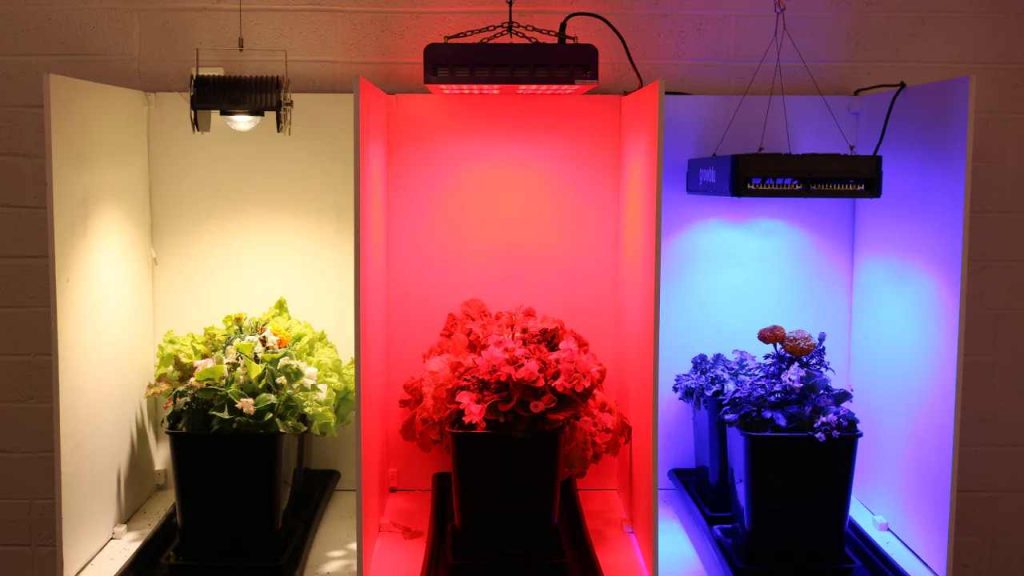
1. **Fluorescent Lights**: Fluorescent lights are a popular choice among beginners due to their affordability and versatility. They come in two main types: compact fluorescent lights (CFLs) and high-output fluorescent lights (HOFLs). CFLs are energy-efficient and produce less heat, making them suitable for small-scale hydroponic setups. HOFLs, on the other hand, provide higher light output and are ideal for larger grow spaces.
- Advantages: Affordable, energy-efficient (especially CFLs), produce less heat, suitable for small-scale hydroponic setups.
- Considerations: Lower light intensity compared to other types, may not be ideal for large or high-light-demanding plants.
2. **High-Intensity Discharge (HID) Lights**: HID lights are known for their high light intensity, making them a popular choice for commercial hydroponic operations. There are two main types of HID lights: metal halide (MH) and high-pressure sodium (HPS). MH lights emit a blue light spectrum, which is ideal for the vegetative growth stage, while HPS lights emit a red light spectrum, which is suitable for the flowering stage. HID lights require a ballast to regulate the electrical current and can generate a significant amount of heat, so proper ventilation is essential.
- Advantages: High light intensity, suitable for commercial and large-scale hydroponic operations, provide specific light spectra for different growth stages.
- Considerations: Require ballast for regulation, generate significant heat (proper ventilation needed), higher energy consumption compared to LEDs.
3. **Light-Emitting Diodes (LEDs)**: LEDs have gained popularity in recent years due to their energy efficiency, long lifespan, and ability to provide a full spectrum of light. Unlike other types of grow lights, LEDs can be customized to emit specific wavelengths of light, allowing for precise control over the light spectrum. While LEDs may have a higher upfront cost, their energy efficiency and long lifespan make them a cost-effective option in the long run.
- Advantages: Energy-efficient, long lifespan, customizable light spectrum, suitable for various growth stages, low heat output.
- Considerations: Higher upfront cost (though offset by energy savings over time), careful selection of quality LED lights is crucial for optimal performance.
These are just a few examples of the types of hydroponic grow lights available. Each type has its unique characteristics and benefits, so it’s essential to choose the one that best suits your specific needs and requirements.
Choosing the Right Lighting System for Your Hydroponic Setup
Selecting the right lighting system for your hydroponic setup is crucial for ensuring optimal plant growth and maximizing your harvest. Several factors need to be considered when choosing a lighting system, including the size of your grow space, the type of plants you are growing, and your budget. Here are some key considerations to keep in mind:
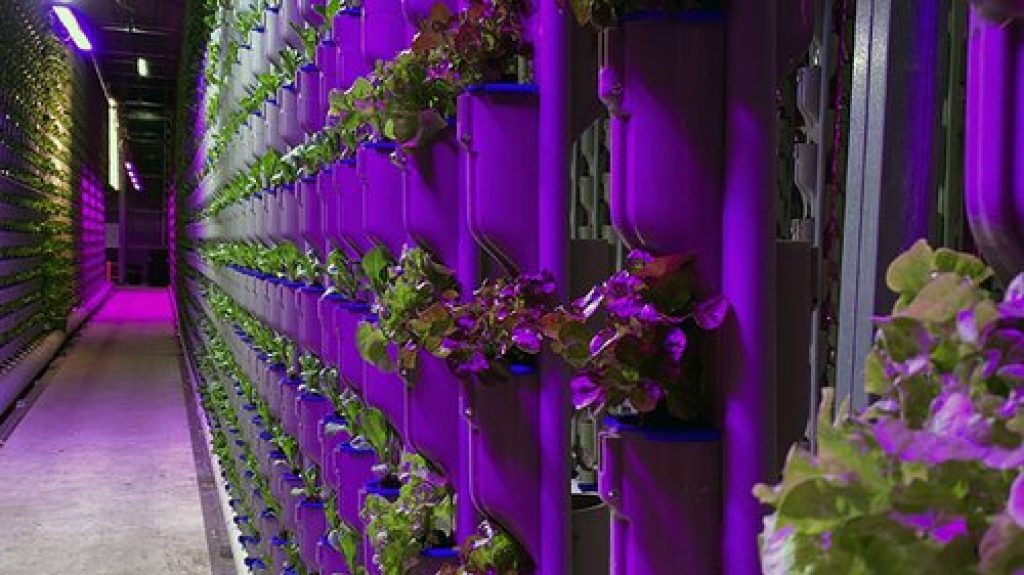
1. **Light Coverage**: The lighting system you choose should provide adequate coverage for your entire grow space. Consider the size and layout of your hydroponic setup and ensure that the lights can reach all areas where plants are located. It’s essential to strike a balance between light intensity and coverage to ensure uniform growth throughout your garden.
2. **Energy Efficiency**: Energy costs can add up quickly when running hydroponic lighting systems. Look for energy-efficient options, such as LED lights, that provide high light output while consuming less electricity. This not only helps reduce your carbon footprint but also lowers your energy bills in the long run.
3. **Light Spectrum**: Different plants have different light requirements at various stages of growth. A lighting system that allows for adjustable light spectrum can be beneficial as it enables you to provide the optimal light conditions for each growth stage. Look for lights that offer a full spectrum of light or allow you to switch between different color temperatures.
4. **Heat Output**: Some lighting systems, such as HID lights, can generate a significant amount of heat. If you are using such lights, it’s crucial to have proper ventilation and cooling systems in place to prevent heat stress on your plants. LED lights, on the other hand, produce less heat and can help maintain a more stable temperature in your grow space.
5. **Plant Type and Growth Stage**: Tailor the lighting system to the specific needs of your plants. Some plants may have higher light requirements, especially during flowering and fruiting stages, while others may thrive with lower light levels during vegetative growth.
6. **Budget and Long-Term Costs**: Assess your budget and weigh the upfront costs against long-term savings. While some lighting systems may have higher initial expenses, energy-efficient options like LEDs can result in significant cost savings over time.
7. **Quality and Reliability**: Invest in reputable and high-quality lighting systems to ensure reliability and longevity. Cheaper, low-quality options may lead to suboptimal performance and may need frequent replacements.
By considering these factors and understanding your specific requirements, you can choose a lighting system that will meet the needs of your hydroponic setup and help you achieve optimal plant health.
Factors to Consider in Setting Up Hydroponic Lighting
Setting up hydroponic lighting involves more than just hanging a few lights above your plants. To ensure optimal plant growth and avoid potential issues, there are several factors to consider. Let’s explore some of the key considerations when setting up your hydroponic lighting system:
1. **Light Height**: The distance between your lights and plants is crucial for providing the right amount of light without causing damage. Different types of grow lights have different recommended heights, so refer to the manufacturer’s instructions for specific guidelines. As a general rule of thumb, aim for a distance that allows the light to cover the entire plant canopy evenly.
2. **Light Angle**: The angle at which the light hits the plants can affect how efficiently they absorb light. For most hydroponic setups, positioning the lights at a slight angle rather than directly overhead can provide better light penetration and coverage. Experiment with different angles to find the optimal position for your plants.
3. **Light Reflectivity**: Maximizing light reflection can help increase the overall light intensity and coverage in your grow space. Consider using reflective materials, such as Mylar, white paint, or aluminum foil, to line the walls and ceiling of your grow room. This will help bounce light back onto your plants, reducing wasted light and improving overall efficiency.
4. **Light Spacing**: Proper spacing between lights is essential to ensure uniform light distribution and avoid shadowing. The specific spacing will depend on the type of grow lights you are using, as well as the size and layout of your grow space. As a general guideline, aim for even spacing to provide consistent light intensity across your entire garden.
5. **Light Spectrum and Timing**: Adjust the light spectrum and photoperiod according to the specific requirements of your plants and their growth stages. Provide blue light for vegetative growth and red light for flowering and fruiting stages.
6. **Light Duration and Photoperiod**: Control the photoperiod by regulating the number of hours of light exposure per day. Some plants require specific photoperiods to initiate flowering or other growth processes.
7. **Light Intensity and Duration**: Monitor and adjust light intensity and duration to avoid light stress and ensure plants receive the appropriate amount of light for their growth needs.
8. **Energy Efficiency**: Consider using energy-efficient lighting options, such as LED grow lights, to reduce electricity consumption and lower operational costs.
By carefully implementing these factors in your hydroponic lighting setup, you can create an optimal growing environment that supports healthy plant growth, encourages robust yields, and maximizes the potential of your hydroponic garden. Proper lighting management, in conjunction with other critical aspects of hydroponics, contributes to a successful and rewarding indoor gardening experience.
Best Practices for Positioning and Spacing Hydroponic Lights
Correct positioning and spacing of hydroponic lights are critical for ensuring that plants receive adequate light for optimal growth. Improper positioning can result in uneven light distribution, shadowing, and reduced productivity. Here are some best practices to follow when positioning and spacing your hydroponic lights:
1. **Uniform Light Distribution**: Ensure that each plant in your hydroponic setup receives an equal amount of light. Position the lights in such a way that the entire plant canopy is evenly illuminated. This helps prevent leggy growth and ensures that all parts of the plant receive the necessary light for photosynthesis.
2. **Avoid Light Bleaching**: Light bleaching occurs when plants receive too much light, causing the leaves to turn white or yellow. To prevent light bleaching, maintain the recommended light intensity for your specific crop and adjust the height of the lights accordingly. If you notice signs of light bleaching, such as discolored leaves, move the lights further away from the plants or reduce the light intensity.
3. **Prevent Shadowing**: Shadowing occurs when one plant blocks the light from reaching another plant, resulting in uneven growth. Proper spacing between plants and lights can help prevent shadowing. Consider the mature size of your plants and arrange them accordingly, ensuring that each plant has enough space to grow without obstructing the light from reaching neighboring plants.
4. **Adjust for Growth**: As your plants grow, it’s important to adjust the height and spacing of your lights to accommodate their increasing size. Regularly monitor your plants and make necessary adjustments to maintain the optimal light distance and coverage. This will help ensure that your plants receive consistent light throughout their growth cycle.
5. **Use Reflective Materials**: To enhance light distribution and efficiency, consider using reflective materials on the walls and ceiling of your grow space. This helps bounce light back onto the plants, increasing overall light intensity and reducing wasted light.
6. **Customize Light Spectrum**: If possible, customize the light spectrum according to the specific needs of your plants and their growth stages. Providing the right light spectrum at different growth phases can optimize plant development.
7. **Regular Maintenance**: Regularly inspect and clean your lights to ensure they are functioning optimally. Dust and debris can block light output and reduce efficiency.
By following these best practices, you can create an environment that promotes healthy and vigorous plant growth, leading to higher yields and better overall plant health.
Optimal Light Spectrum for Different Plant Growth Stages
Plants have different light requirements at various stages of growth. Understanding the optimal light spectrum for each growth stage is crucial for maximizing plant health and productivity in a hydroponic system. Here’s a breakdown of the light spectrum requirements for different plant growth stages:
1. **Seedling Stage**: During the seedling stage, plants require light in the blue spectrum (400-500 nm) to promote root and leaf development. Blue light helps stimulate chlorophyll production, leading to stronger and healthier seedlings. Providing seedlings with a light source rich in blue light will encourage compact and sturdy growth.
2. **Vegetative Stage**: In the vegetative stage, plants require a balanced spectrum of light that includes both blue and red wavelengths. Blue light continues to promote leaf development, while red light (600-700 nm) stimulates stem growth and branching. Providing a combination of blue and red light during the vegetative stage helps plants establish a strong root system and grow lush and healthy foliage.
3. **Flowering Stage**: During the flowering stage, plants require light in the red spectrum to promote the production of flowers and fruits. Red light stimulates the production of hormones that trigger flowering and fruiting. By providing plants with light rich in red wavelengths, you can help maximize flower and fruit production, leading to a bountiful harvest.
Some advanced lighting systems allow for adjustable light spectrum, allowing you to fine-tune the light output for each growth stage. By providing the optimal light spectrum at each stage, you can ensure that your plants receive the light they need to thrive and produce healthy and abundant yields.
Managing Light Intensity and Duration in Hydroponics
In addition to the light spectrum, managing light intensity and duration is crucial for successful hydroponic gardening. Different plants have different light requirements, and providing the right amount of light at the right time is essential for promoting healthy growth. Here are some key considerations when managing light intensity and duration in hydroponics:
1. **Light Intensity**: Light intensity refers to the amount of light that reaches the plants’ leaves. It is measured in foot-candles or lux. Different plants have different light intensity requirements, so it’s important to understand the specific needs of the crops you are growing. Most plants require a light intensity of around 5,000 to 10,000 lux during the vegetative stage and 10,000 to 20,000 lux during the flowering stage. However, these values can vary depending on the specific crop, so it’s best to consult a lighting guide or the plant’s specific requirements.
2. **Light Duration**: The duration of light exposure, also known as the photoperiod, plays a crucial role in plant growth and development. It refers to the number of hours of light the plants receive in a 24-hour period. Different plants have different photoperiod requirements, with most plants requiring 14 to 18 hours of light during the vegetative stage and 10 to 12 hours of light during the flowering stage. It’s important to maintain a consistent light schedule to avoid stressing the plants and disrupting their growth cycles.
3. **Light Schedule**: To manage light intensity and duration effectively, it’s recommended to use a timer to automate your lighting system. This ensures that your plants receive the right amount of light at the right time, even if you’re not available to manually control the lights. Set the timer to provide the desired light intensity and duration for each growth stage, and monitor your plants regularly to ensure they are responding positively to the light schedule.
4. **Light Intensity Adjustment**: As plants grow, their light requirements may change. It’s important to monitor the light intensity and adjust it accordingly to meet the plants’ evolving needs. This can be done by adjusting the height of the lights or using dimmable lights that allow you to control the light output. Regularly check the light intensity and make necessary adjustments to ensure optimal plant growth.
By carefully managing light intensity and duration, you can create an environment that promotes healthy and vigorous plant growth, leading to higher yields and better overall plant health.
Troubleshooting Common Hydroponic Lighting Issues
Despite your best efforts, you may encounter some common issues with hydroponic lighting. Understanding these issues and knowing how to troubleshoot them can help you address problems quickly and prevent them from impacting your plants’ health. Here are some common hydroponic lighting issues and their possible solutions:
1. Light Burn:
Light burn occurs when plants are exposed to excessive light intensity or heat. Signs of light burn include yellowing or bleaching of leaves, stunted growth, and leaf curling. To prevent light burn, adjust the height of the lights to maintain the recommended light intensity for your specific crop. If the lights are generating too much heat, ensure proper ventilation and cooling systems are in place to dissipate excess heat.
2. Light Deficiency:
Insufficient light intensity can lead to weak and leggy growth in plants. Signs of light deficiency include elongated stems, small leaves, and slow growth. To address this issue, you can increase the light intensity by either lowering the lights or using higher-wattage bulbs. If you’re using LED grow lights, make sure they are providing the appropriate light spectrum for the specific growth stage of your plants. Also, ensure that the lights are positioned to evenly cover the entire plant canopy, providing sufficient light to all parts of the plant.
3. Uneven Light Distribution:
Uneven light distribution can occur if some plants are receiving more light than others, leading to inconsistent growth and lower yields in shaded areas. To address this issue, consider rearranging your plants or adjusting the light angles to ensure uniform light coverage across the entire grow space. Using reflective materials on the walls and ceiling can also help bounce and distribute light more evenly, reducing the impact of uneven light distribution.
4. Light Spectrum Mismatch:
Using the wrong light spectrum during different growth stages can adversely affect plant development. For example, using primarily blue light during the flowering stage may result in reduced flower and fruit production. To avoid this issue, adjust the light spectrum to match the specific needs of your plants at each growth stage. During the flowering stage, switch to a light spectrum rich in red wavelengths to promote flowering and fruiting.
5. Lighting Timer Malfunction:
Problems with your lighting timer can disrupt the photoperiod and impact plant growth. Make sure to regularly check and calibrate your lighting timer to ensure accurate and consistent light schedules for your plants. If necessary, have a backup timer in case the primary one malfunctions.
6. Inadequate Light Duration:
Plants require a specific photoperiod for optimal growth, and inadequate light duration can affect their development. Ensure that your plants receive the correct amount of light exposure each day according to their specific light requirements. During the vegetative stage, most plants need 16-18 hours of light per day, while during the flowering stage, they typically require 12 hours of light and 12 hours of darkness.
7. Light Fixture Issues:
Sometimes, light fixtures may malfunction or have damaged components that affect light output. Regularly inspect your light fixtures for any signs of damage or malfunction. Replace faulty bulbs or fixtures promptly to maintain consistent light levels.
By being proactive in monitoring your hydroponic lighting system and promptly addressing any issues that arise, you can provide the optimal light conditions for your plants, supporting healthy growth and maximizing yields in your hydroponic garden.
Upgrading your hydroponic lighting system
Upgrading your hydroponic lighting system can significantly improve plant growth and overall productivity in your hydroponic garden. Whether you are looking to increase light intensity, improve light spectrum control, or enhance energy efficiency, a lighting upgrade can take your indoor gardening to the next level. Here are some steps and considerations to keep in mind when upgrading your hydroponic lighting system:
- Assess Your Current Lighting System: Before making any changes, evaluate your current lighting setup. Identify any shortcomings or areas for improvement. Determine the type of grow lights you are currently using, their wattage, light spectrum capabilities, and the coverage they provide.
- Set Your Goals: Decide on your objectives for the upgrade. Do you want to increase light intensity for better growth? Are you looking to achieve better control over the light spectrum for different growth stages? Are you seeking energy efficiency to reduce operating costs? Having clear goals will help you choose the right lighting upgrade.
- Choose the Right Type of Grow Lights: Consider the different types of grow lights available, such as LEDs, fluorescent lights, and HID lights. LED grow lights are becoming increasingly popular due to their energy efficiency, long lifespan, and customizable light spectrum capabilities. LEDs also emit less heat, reducing the need for additional cooling systems.
- Select the Proper Light Spectrum: Opt for grow lights that provide a balanced light spectrum with wavelengths suitable for both vegetative and flowering stages. Some advanced LED systems allow you to adjust the light spectrum, providing more precise control over plant growth and development.
- Calculate Light Requirements: Determine the light requirements of your plants and the coverage area you need to illuminate. Ensure the new lighting system provides adequate light intensity and uniform light distribution for all your plants.
- Energy Efficiency: Consider the energy efficiency of the new lighting system. Look for lights with high energy efficiency ratings to reduce electricity consumption and lower operational costs.
- Plan Installation and Maintenance: Plan how you will install the new lighting system and any additional equipment required. Ensure that the upgraded lighting system is compatible with your current hydroponic setup. Also, factor in the maintenance needs of the new lights and establish a routine for cleaning and replacing bulbs when necessary.
- Budget Considerations: Upgrading your lighting system can be a significant investment. Set a budget that aligns with your goals and objectives. While high-quality grow lights may have a higher upfront cost, they often provide better performance and longer lifespans, making them cost-effective in the long run.
- Monitor and Adjust: Once you’ve upgraded your hydroponic lighting system, monitor your plants’ response and growth. Adjust the light intensity and spectrum as needed to provide the best conditions for your specific plant species.
By carefully considering these steps and factors, you can make informed decisions when upgrading your hydroponic lighting system, leading to improved plant health, higher yields, and a more successful and rewarding indoor gardening experience.
Conclusion
Mastering hydroponic lighting techniques is essential for any indoor gardener seeking to achieve optimal plant growth and maximize yields in their hydroponic system. This ultimate guide has covered crucial aspects of hydroponic lighting, providing a comprehensive understanding of its importance, types of grow lights available, light spectrum requirements for different growth stages, troubleshooting common issues, and the process of upgrading your lighting system.
By grasping the significance of providing the right light conditions, hydroponic gardeners can emulate natural sunlight and create an environment that promotes healthy photosynthesis and vigorous plant development. Understanding the specific light spectrum needs during seedling, vegetative, and flowering stages enables cultivators to customize lighting setups to match their plants’ requirements accurately.
With this knowledge, gardeners can troubleshoot common lighting issues, such as light burn, light deficiency, or uneven light distribution, effectively addressing problems that may arise in their indoor gardens. Furthermore, by staying proactive in monitoring light intensity, duration, and spectrum, growers can fine-tune their lighting systems for optimal plant health.
Upgrading your hydroponic lighting system can take your indoor gardening to new heights, enhancing energy efficiency, light spectrum control, and overall plant growth. By setting clear goals and selecting the right type of grow lights, gardeners can ensure that their plants receive the ideal light intensity and spectrum for their growth stages.
In conclusion, mastering hydroponic lighting techniques is a critical skill that empowers indoor gardeners to create a thriving and productive environment for their plants. By combining knowledge of lighting requirements with other vital aspects of hydroponics, such as nutrient provision and environmental control, growers can embark on a journey of successful and rewarding indoor gardening, achieving healthier plants and abundant yields. With the insights gained from this ultimate guide, growers are well-equipped to optimize their hydroponic lighting systems and take their gardening endeavors to the next level. Happy growing!

